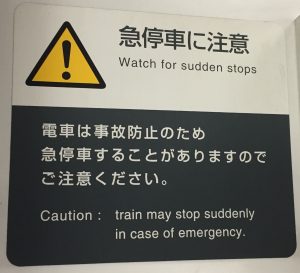
Have you ever used an online translator or Japanese-English dictionary to quickly translate words or phrases? Did you try the translation in a conversation? Did you get a good result?
My student is keen on learning words related to his business. He made a list of words he wanted to practice during our lesson. He typed the words into an online translator and wrote down the translation. In the lesson he used one of these words. There was some confusion and the conversation broke down.
What happened? What was the problem?
The problem was, the Japanese word the student wanted to use has a variety of translations. The English word is a correct translation, but it didn’t fit the context of the conversation. I asked the student for the Japanese word and typed it into my favorite online dictionary (www.jisho.org). There were four entries. The first three entries didn’t match the context of the conversation. The fourth entry was appropriate for the conversation. He didn’t know the difference between the four words, so he just took the first one and went with it.
Here is an example: The Japanese word 遠慮 (えんりょ / enryo) has the following translations according to the online dictionary www.jisho.org:
reserve; constraint; restraint; modesty; diffidence; hesitation; holding back; discretion; tact; thoughtfulness; declining; refraining; forethought; foresight
As you can see, there are 13 different translations!
So, how can you choose the appropriate word for the situation? To be honest, it’s quite difficult. I recommend asking your teacher. You can say: “I don’t know this word in English. I think it means ◯◯. Is that right?” Also, try making a sentence using the word. This will give context for the teacher to help you.
Context is important when translating words and phrases. Online translators and dictionaries often lack context which results in inappropriate translations. Work with your teacher to find the best word for the situation.
Natural English used in this entry:
Keen = interested
go with it (went with it) = to use something
lack = don’t have enough



